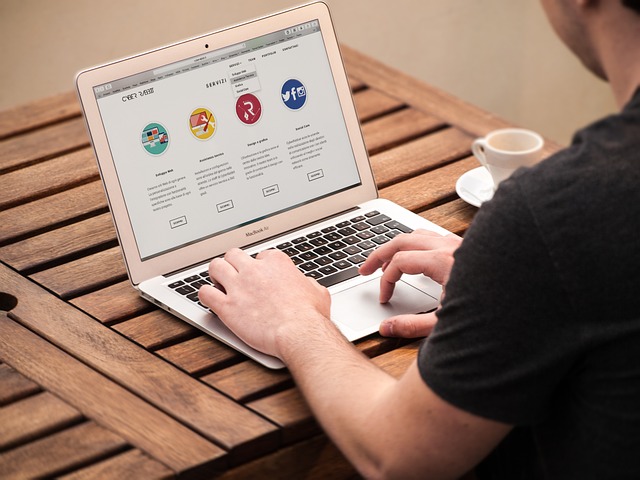These days, attention spans are shorter than ever, and first impressions matter more than ever. For businesses, this translates to a crucial need for informative and visually captivating websites. Text-heavy content, while important, can struggle to grab attention and hold onto it. Here’s where the power of visuals comes in. Visual elements can transform your website from a digital brochure into a dynamic, engaging experience that converts visitors into customers.
Why Visuals Matter
Our brains are naturally attuned to processing visuals swiftly and efficiently, making them a powerful tool for communication. The research underscores this, revealing that individuals retain a remarkable 65% of visual information even after three days, in stark contrast to a mere 10% of auditory content. Moreover, visuals possess the unique ability to evoke emotions, forging connections with audiences on a deeper level. Consider the stark difference between a cluttered webpage inundated with text and one adorned with captivating images, videos, and infographics – the latter exudes an inviting aura, beckoning visitors to explore further and absorb information effortlessly.
Beyond Aesthetics: The Strategic Use of Visuals
Visuals aren’t just about making your website pretty (although that doesn’t hurt!). They should be used strategically to achieve specific goals. Here are a few key ways visuals can enhance your website:
- Showcase Your Products and Services: High-quality product photography and well-produced videos can bring your offerings to life and allow visitors to see the value you provide.
- Build Trust and Credibility: Professional-looking visuals convey a sense of competence and legitimacy. Authentic customer testimonials and team photos can further humanize your brand.
- Improve User Experience: Strategically placed visuals can guide visitors through your website, make it easier to find information, and ultimately lead them to take action, whether it’s making a purchase, signing up for a newsletter, or contacting you.
- Boost Engagement: Eye-catching visuals can make website visitors stay on your site longer and encourage them to explore further. Interactive elements like product carousels and 360-degree product views can further increase engagement.
The Essential Arsenal: Types of Visuals for Your Website
Now that we’ve highlighted the significance of visuals, let’s explore the various types you can integrate:
- High-Quality Images: This includes product photography, lifestyle images that showcase your brand in action, and stock photos that complement your content. Always prioritize high resolution and ensure images are relevant to your message.
- Videos: Demonstrations of products, customer endorsements, explanatory videos, and even short behind-the-scenes glimpses can be incredibly engaging.
- Infographics: These are fantastic tools for presenting data in an aesthetically pleasing manner.
- Icons and Illustrations: Icons can simplify navigation and add visual interest, while illustrations can inject personality and creatively explain concepts.
- Animated GIFs: Carefully chosen animated GIFs can add a touch of personality and movement to your website. Create animated GIFs and use them sparingly and strategically to highlight key features, showcase product functionality, or inject a bit of humor.
- Color Palette: Colors can stir emotions and help define your brand’s identity. Choose a palette that reflects your brand personality and is easy on the eyes.
- Typography: Fonts are an often overlooked visual element, but they can significantly impact your website’s overall look and feel. Choose fonts that are easy to read and align with your brand.
Beyond the Basics: Pro Tips for Using Visuals Effectively
While simply including visuals on your website is a good start, here are some additional tips to maximize their impact:
- Responsive Design: Adopting a responsive design ensures that your imagery remains impactful and engaging across all devices.
- Make Accessibility a Priority: It’s vital to consider visually impaired users when designing your website. Adding descriptive alt text to images enables screen readers to convey the content to visually impaired individuals, ensuring everyone can access and understand your visuals.
- Maintain a Uniform Visual Style: Creating a consistent visual theme throughout your website strengthens your brand identity and fosters recognition among visitors. Consistency in color schemes, typography, and design elements improves user experience and reinforces brand familiarity.
- Quality Trumps Quantity: Instead of inundating your website with too many visuals, focus on curating a selection of high-quality imagery and multimedia content. Emphasize substance over volume to maintain visitor engagement and convey professionalism.
- Professional Assistance: If resources permit, enlist the expertise of professional photographers, videographers, or graphic designers to elevate your website’s visual appeal. Outsourcing specialized tasks ensures the creation of polished visuals that resonate with your audience and effectively communicate your brand message.
Conclusion: The Visual Language of Success
By strategically leveraging the power of visuals, you can transform your business website from an online brochure into a dynamic and engaging platform that connects with your audience, builds trust, and ultimately drives conversions. Remember, a picture is worth a thousand words in the digital world. So, start incorporating compelling visuals and watch your website come alive.







